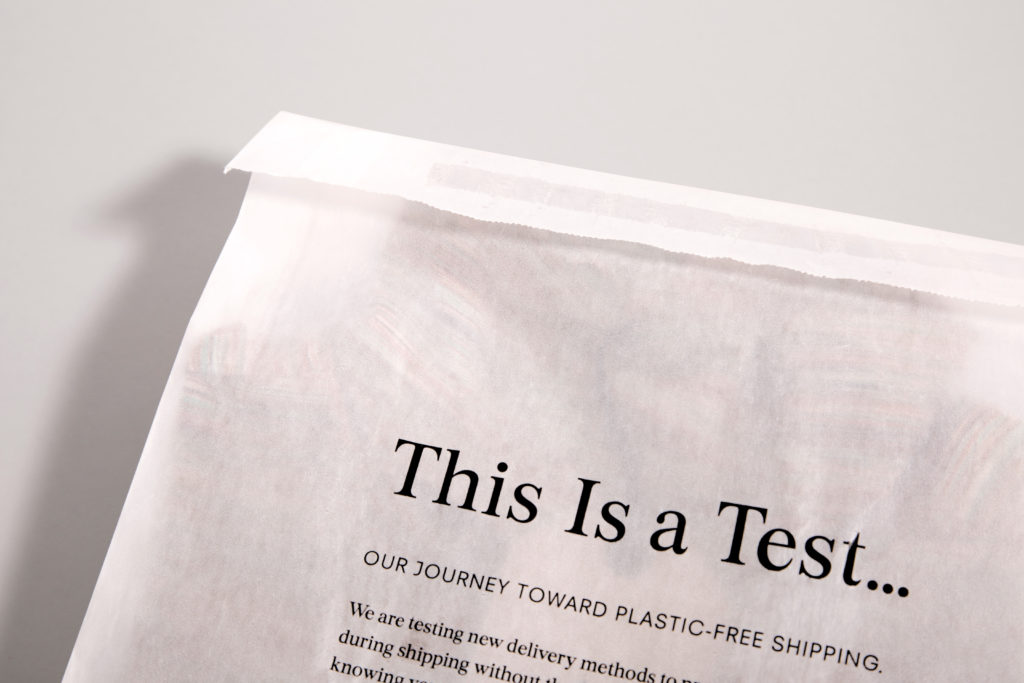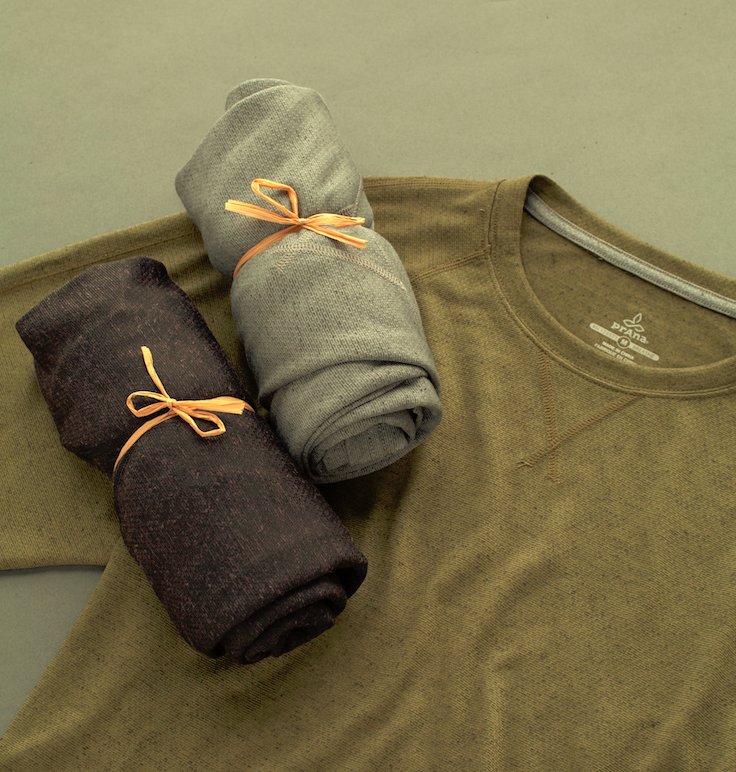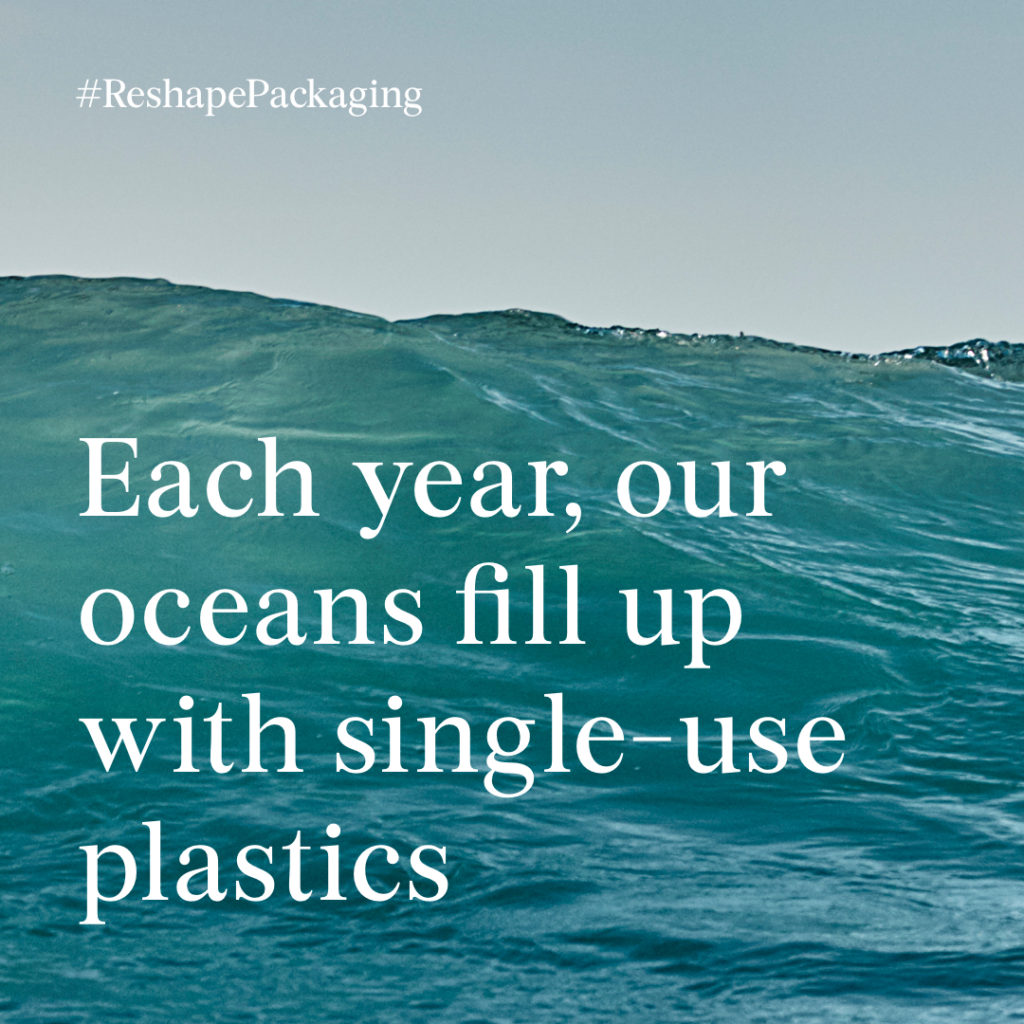
If humanity is going to manifest a sustainable future, companies must join governments and nonprofits in transforming our economy. While individualized actions are necessary, we need widespread collaboration to truly shift the needle. An important lever to creating an environmentally responsible economy is sustainable packaging.
To advance the entire consumer goods industry, prAna launched the Responsible Packaging Movement. Over the last 10 years, the active wear brand has transformed its own packaging supply chain to minimize the use of plastics and excess wrapping.
“We wanted to give our knowledge, education and experience to brands who are interested in doing the same,” Rachel Lincoln, prAna’s director of sustainability and social compliance, tells We First.
Through the initiative, which they launched in summer 2020, prAna is laying the path for other companies to transform their own packaging supply chains.
The Responsible Packaging Movement
Internally, the brand has committed to completely remove plastic from its packaging by fall 2021. prAna also set out to utilize 100% FSC certified paper packaging by the end of 2022 and 100% recycled or next-gen fiber by 2025.
While they don’t require other participating brands to meet the same standards, prAna offers guidance and sets an example. Specifically, the Responsible Packaging Movement has “given brands a five year window to eliminate or work towards elimination of plastic in their packaging and to work towards non-virgin forest fiber packaging,” Lincoln explains.
To help with education and advocacy, prAna has partnered with nonprofits 5 Gyres and Canopy. It also gathered support from brands like Mara Hoffman, Outerknown and Toad and Co. All of these partners celebrated the launch since day one and have been spreading the word that this is bigger than any one company or organization.
In just a few months, the movement has already recruited 40 plus brands to join. Participating companies receive prAna’s packaging guide and internal best practices for free.
The non-binding nature of the movement brings up questions about monitoring and measuring impact. “The purpose is to inspire other brands to publicly set goals and give them the tools to get there,” Lincoln says. “We believe it’s important for brands to take responsibility for change, not because they’re held accountable by somebody.” This structure also opens the door for more companies that want to get started but are apprehensive to act on purpose.
“A lot of brands are afraid to take a risk,” Lincoln explains. “Packaging is an easy place to play with responsibility. What’s the worst that could happen? The fear based mentality of not joining or not moving forward on changing your packaging is a non-issue. Don’t be afraid to take the risk and try something new,” she says.
Over the next 12 months, prAna will host four webinars and survey members to, “bring the right level of content,” Lincoln says. prAna wants to understand where each brand is on its sustainability journey in order to provide the most relevant and actionable resources. The movement is expanding fast and looking for more member companies.
Clothing for positive change
prAna’s purpose is centered around making clothing for positive change. The brand was founded around 30 years ago to fill the need for active wear that could double as nightwear.
“Our brand has a sustainably-minded foundation,” Lincoln says. “That seeped into every employee hired. Early on, you weren’t necessarily hired for your expertise. You were hired because you were the right cultural fit. We have all these many evangelists on our staff.” The lesson here is that building brand ambassadors from the inside out is an excellent way to build your community and support brand marketing.

prAna’s purpose is founded around three pillars. “The first one is adventure for all,” Lincoln shares. “That is about getting everyone outside to do activities and equality and inclusivity. Next, we’re focused on respect and responsibility, which is where the Responsible Packaging Movement fits in. The last one is progress, not perfection.”
prAna’s articulation of its purpose was actually developed when a group of team members asked, “‘How can we create an internal mantra that we all understand?’,” the sustainability director recalls. “Clothing for positive change started as an internal rally cry. If you come to a fork in a road, how do you make a decision? Is it truly backing clothing for positive change?”
When it comes to decision-making, prAna considers several principles. “We’re not going to sacrifice sustainability for performance or profits,” Lincoln says. “Similarly, we wouldn’t give up style for sustainability. Everything we bring to market has to hit those points. We don’t look at what we are willing to compromise on. We ask, ‘how much of each thing can we have?’”
prAna publicly measures its sustainability performance via its parent company, Columbia, and participates in the Textile Exchange Preferred Fibers report. Lincoln says that prAna considers things like sustainability attributes of a given style and the percentage of recycled material in paper packaging as internal metrics.
How the movement began:
prAna’s internal commitment to sustainable packaging began in 2010. “We’ve got a photo of floor to ceiling, from one day of unpacking goods at one of our Boulder stores,” Lincoln shares. “The staff asked, ‘What do you expect us to do with all this plastic?’”
It was a simple yet profound question. The conscious activewear brand responded by forming a volunteer taskforce that came up with a practical solution called the Roll Packing Method to reduce plastic packaging.
“We’re rolling the product and putting a paper tie on it. There’s low waste. It’s completely recyclable. There’s no plastic involved,” Lincoln says. “We didn’t go to a hundred percent of our product line immediately. We started with one factory and expanded from there. As of spring 2020, 75% to 80% of our product comes roll packed.”
Despite concern from some naysayers, Lincoln says that prAna’s products don’t get dirty or destroyed. “We realized that it (sustainable packaging) has not become widely adopted. We wanted to share what we learned and inspire others to do the same. The only credit we want is to be acknowledged for bringing brands together,” she says. “It’s really about accelerating the innovation on behalf of the whole industry.”
Collaboration for change:
- Suppliers: prAna has been able to gather support from myriad stakeholders to accelerate the move away from plastic packaging. On the supply side, Lincoln says that, “most factories are excited to do something around sustainability because it’s an opportunity to touch the end consumer and change their internal business.”
- Other brands: prAna also actively engages with other brands around sustainability issues. “We were already friends with Outerknown, Reformation and Toad and Co. and others,” Lincoln says. The product sustainability departments are small and they would occasionally send emails or even run into each other at events. “We all started talking about what we’re doing for packaging and we discovered that we were doing a lot of the same research. That was an ‘Aha’ moment.” They decided to share insights.
Another way prAna collaborates with brands is through marketing. While the movement is on sustainable packaging, Lincoln says they needed to connect with the marketing department to amplify the message.
“When brands sign-on, we’re all sharing each other’s story socially, which is a requirement for participating in the movement.”
- Consumers: Another source of momentum comes from connecting with consumers. prAna is encouraging brand ambassadors and influencers to light the spark with their target audience. “Consumers can see the post, take a snapshot and then share with prAna and all these other brands what their plastic free goals are,” Lincoln says. “We anticipate 5 Gyres and Canopy doing some to bring additional education to our consumers around it.”
While COVID-19 presents challenges for everyone, Lincoln says that the timing helps raise awareness. “We’re all sitting at home, ordering everything to be delivered to our door. We are hypersensitive to packaging and the amount of excess waste that happens. They just need some guidance.”
A vision for the future:
prAna’s guidance and movement have been well received, not only by brands, suppliers and consumers, but also by the media. “We’ve had over 50 press hits,” Lincoln shares. “I would say half of the brands that have signed are people that heard about it and came to us.” It goes to show that building momentum around purpose yields earned media and expands networks.
Despite the early success, Lincoln says the industry is not quite there when it comes to viable fabric options that take sustainability to the next level. “I would say that innovation will come with the next generation fiberm,” she speculates. “For us, product sustainability is innovation. Innovation is sustainability. There are options, but they’re not scalable today. Hopefully other brands that are interested in contributing to changing that is kind of what we’re hoping to find through the movement.”

In terms of the Responsible Packaging Movement, Lincoln and prAna have some lofty but inspirational goals. Over the next three years, they would like to see “roll packing become a standard in the industry. We shouldn’t automatically think we have to wrap something just because we want to protect it.”
Consumer goods brands have gotten stuck in an unsustainable rut because of low prices that don’t internalize negative externalities. “We are so ingrained with how inexpensive it currently is. It’s difficult to turn that Titanic. It all comes down to cost,” Lincoln says. “And what are you going to give up to get that cost?”
A key to successfully turning the corner, Lincoln explains, is having leadership onboard. She also says that larger companies typically show more resistance to changing their habits than smaller more nimble businesses.
Regardless of where you’re at, there is always room to take the first step and join the movement. prAna has been working on sustainable products and packaging for 10 years and still has room to develop.
“If you move too fast, you’re going to fail miserably,” Lincoln cautions. “Failure isn’t a problem. If you can fail on a small scale and apply those learnings to the next failure, that’s what success is going to look like for each brand. And that’s how we’ll get there together.”

